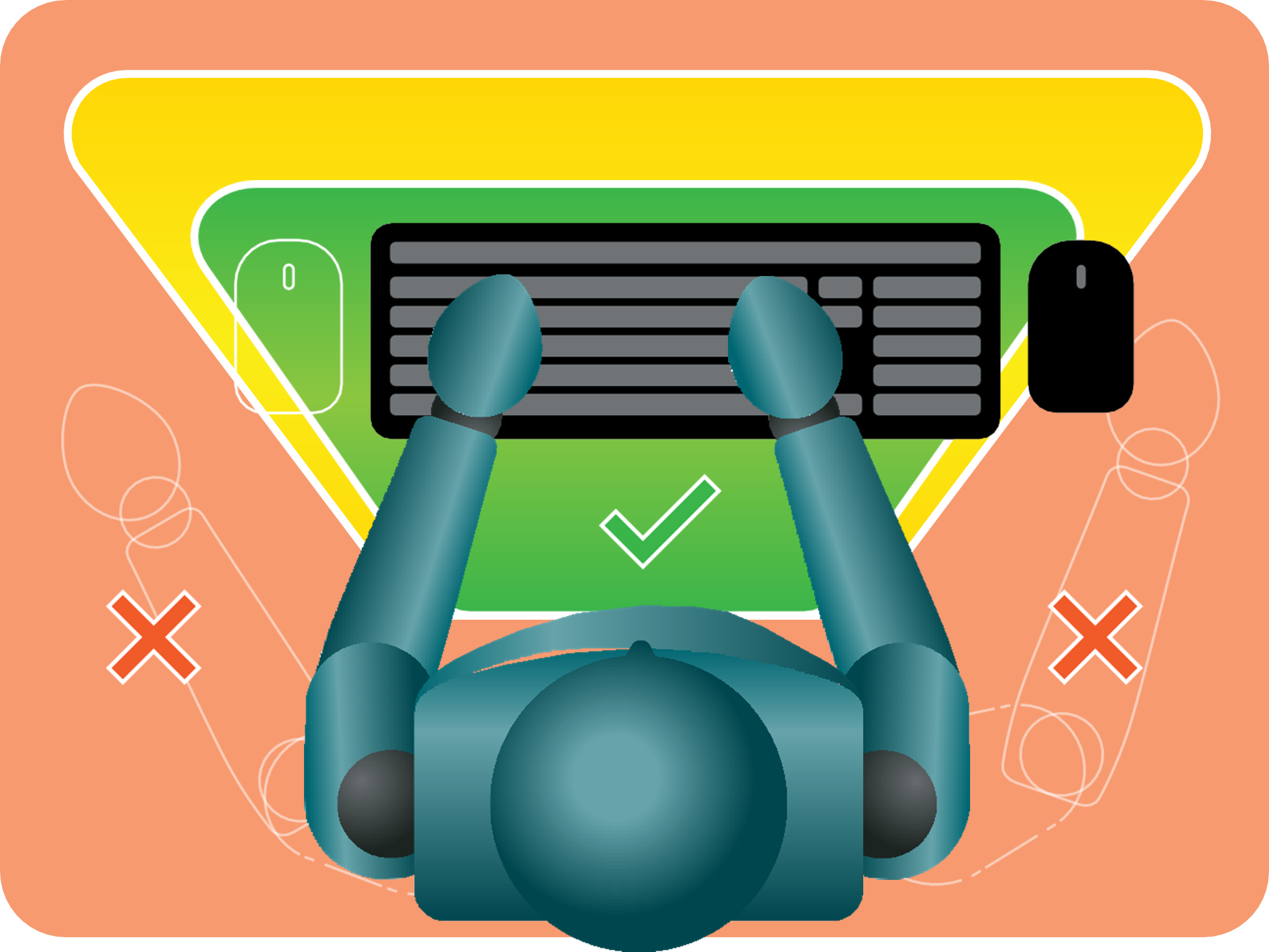Reach: Keep it Close
Quick Start Guide Poster 6
Image

Reach: Keep it Close
- Set up the workspace with frequently used equipment conveniently close to your body.
- Keep frequently used equipment within a forearms distance.
- Long reaches to equipment can increase fatigue and discomfort.
- Avoid reaches outside shoulder width when using your mouse.
- When working away from the workstation, reaching down to floor level and lifting below knee height and above shoulder height can overload the back and shoulders.
- Frequently performed work should be performed closer to the body.
- The mouse and keyboard should be less than a forearm’s length in front of the body.
- The keyboard and mouse should normally be at about elbow height and they should be used on a flat surface. The keyboard should not be tilted up. The goal is to have the forearms approximately horizontal, with the wrists straight and not bent back.
- If the number key-pad is not used heavily, a keyboard without a number key-pad allows the keyboard to be placed more centrally. This avoids workers having to reach for the mouse outside their shoulder width.
- If a worker uses a mouse with their right hand, they could consider using the mouse with their left hand where it could be positioned inside their shoulder width.
- Paper documents should be positioned close to the computer display to minimize awkward head positions. A document holder can be used to raise and hold the documents at screen height. A sloped document support allows for ease of viewing and handling.
- All the parts of the workstation have to work together: After adjusting the individual parts of the workstation separately, fine-tune the setup so the workstation fits your body and tasks.
- When working away from the workstation:
- Lifting at the office: Reaching down to the floor and lifting objects below knee level puts high stresses on the spine. Store it off the Floor, reduces stress on the body.
- Reaching and lifting with the hands above shoulder height can easily fatigue the shoulders. Keep commonly used items below shoulder height.=
Include breaks and pauses at work
- Move between different tasks to help reduce fatigue and discomfort.
- Perform other tasks like walking to a printer, filing, or water bottle filling as a short break away from the workstation.
- Fatigue creeps up on people. Vary tasks and working positions. Move early – before you feel fatigue – and move often.
- Stretching can help.
Improve work
- Ask yourself and others, “Why do people feel fatigued or sore when doing office work?” and keep asking “why” until you get a good answer!
- Once the underlying cause of the problem has been identified, employees and managers working together can control hazards and improve work best.
- Use these ideas for any office work, whether in an office building, home office, automobile or in the field.
What are we going to do today to make our workstations and workspace better?
Whatever changes you make, check that you are not creating any new problems.
